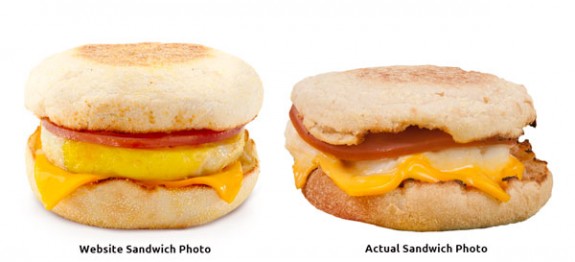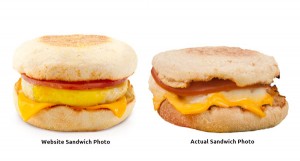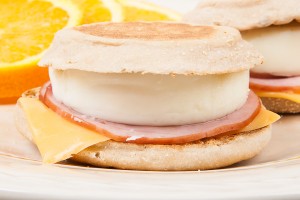What You See Isn’t What You Get
Welcome to a new series of posts comparing food photography used by the restaurant and food manufactures versus what you are actually served or buy.
Is It Real or Is It Photoshop
The food industry gets away with murder when it comes to their product photographs versus what you actually get or buy. Many consumers are pissed off when the product doesn’t match the higher stylized, heavy retouched photographs restaurants and processed food manufacturers use in their advertising and product packaging.
For most industries this is considered misleading and deceptive advertising. For food industry lobbyists and management it is American enterprise at its best. They “invest” millions of dollars each year assuring Congress, the FDA and USDA do not pass laws or regulations forcing them to show customers what they are actually buying versus the deceptive food photography used to sell their products.
Italian Med Diet WYSIWYG Photos
If you’ve bought my cookbooks or made any of the recipes on this website, you know my policy is what you see is what you get. What the computer industry calls WYSIWYG (pronounced whizzy wig). When it comes to fast and casual food restaurants and thousands of processed foods sold in supermarkets what you see isn’t what you get.
It Attracts Buyers and Viewers
Beautified stylized food photos sell cookbooks and magazines and attract viewers to cooking shows and websites. But what is the point if you make a recipe and it doesn’t look anything like the photo or version plated on the cooking show? You think you did something wrong when it actuality you prepared and cooked the recipe exacalty as specified. It just so happened the cooking show has a version impeccably prepared and styled waiting in the wings to make your mouth water and come back for more. Kind of like Pavlov’s dog conditioning.You see this gorgeous, mouth watering food and can’t wait to make or buy it.
You Get What You Pay For
High end restaurants can turn out works of art that stimulate sight, smell and taste. In some cases it is a shame destroying what a chef took many minutes or hours to create. But with the exquisitely plated meal comes an exorbitant price.
Food manufacturers know most consumers won’t return a product that doesn’t look like the photo in the ad, restaurant menu, or package. They’ll moan, groin and curse, but rarely return it for a refund. If most Americans did return these times, manufactures would listen. But, when you’ve only paid a few dollars for an egg sandwich, hamburger, chicken or pizza you shouldn’t expect it to look like food served by high quality restaurants or gourmet shops.You should expect the photographs to look more like the food or the food more like the photograph.
Photo Fact versus Fiction
In this new series of posts, I will compare what restauarnts and food manufactures want you to believe you are buying versus what you actual get. The use of deceptive, misleading food photography should be banned. If fast food restaurants served sandwiches like the one pictured on the left you should expect to pay $5 or more per sandwich. At that price, most Americans would abandon fast food in droves.
Most fast food items and many casual restaurant items look nothing like their photographs. Fast food, which the industry refers to as quick serve, is meant to be slopped together and served. The result is the slop you get pictured on the right. By comparison, a homemade sandwich below, made using food rings, looks more like the ideal sandwich.
Plus, this homemade egg-muffin sandwich is healthier having less calories and sodium.




